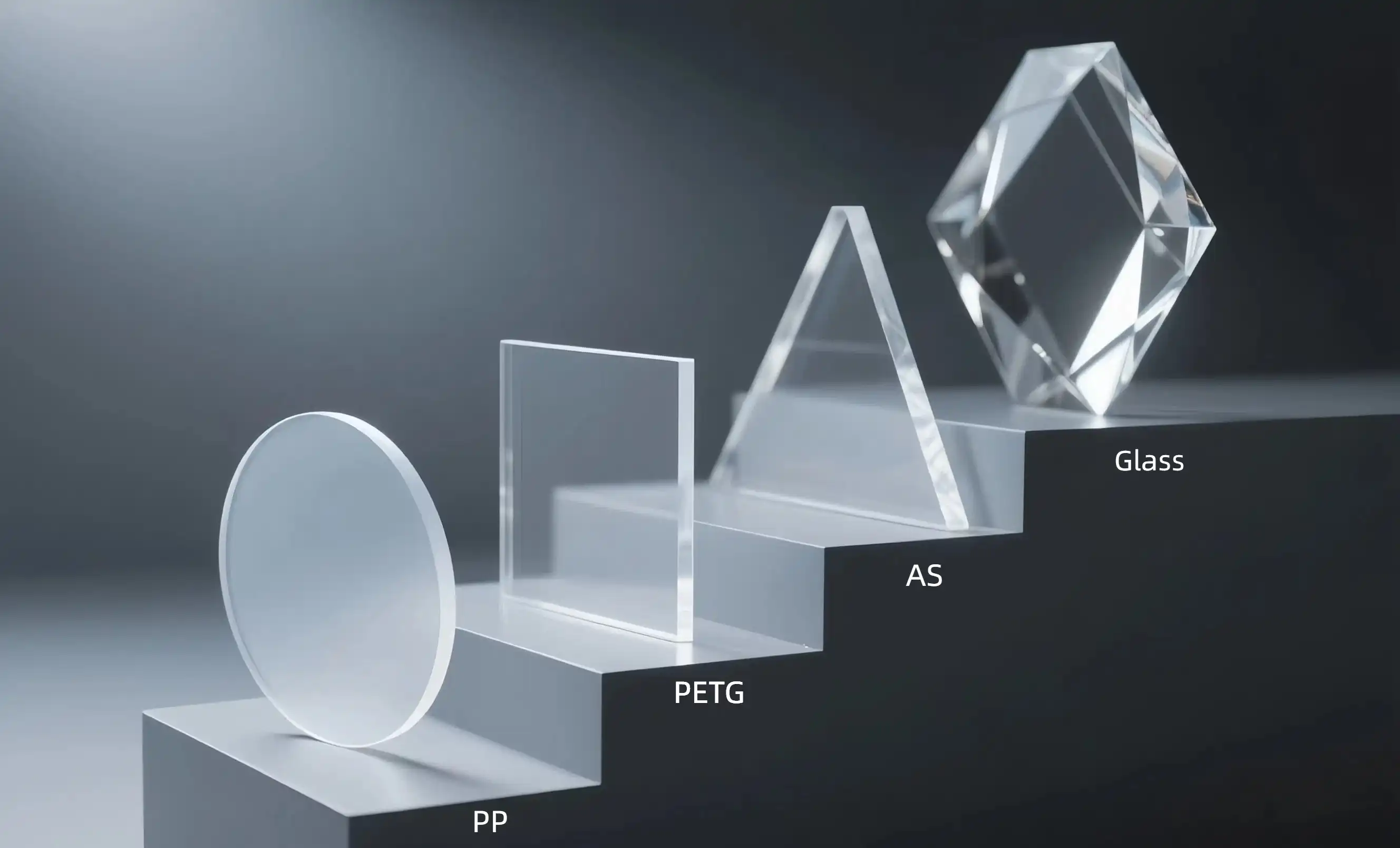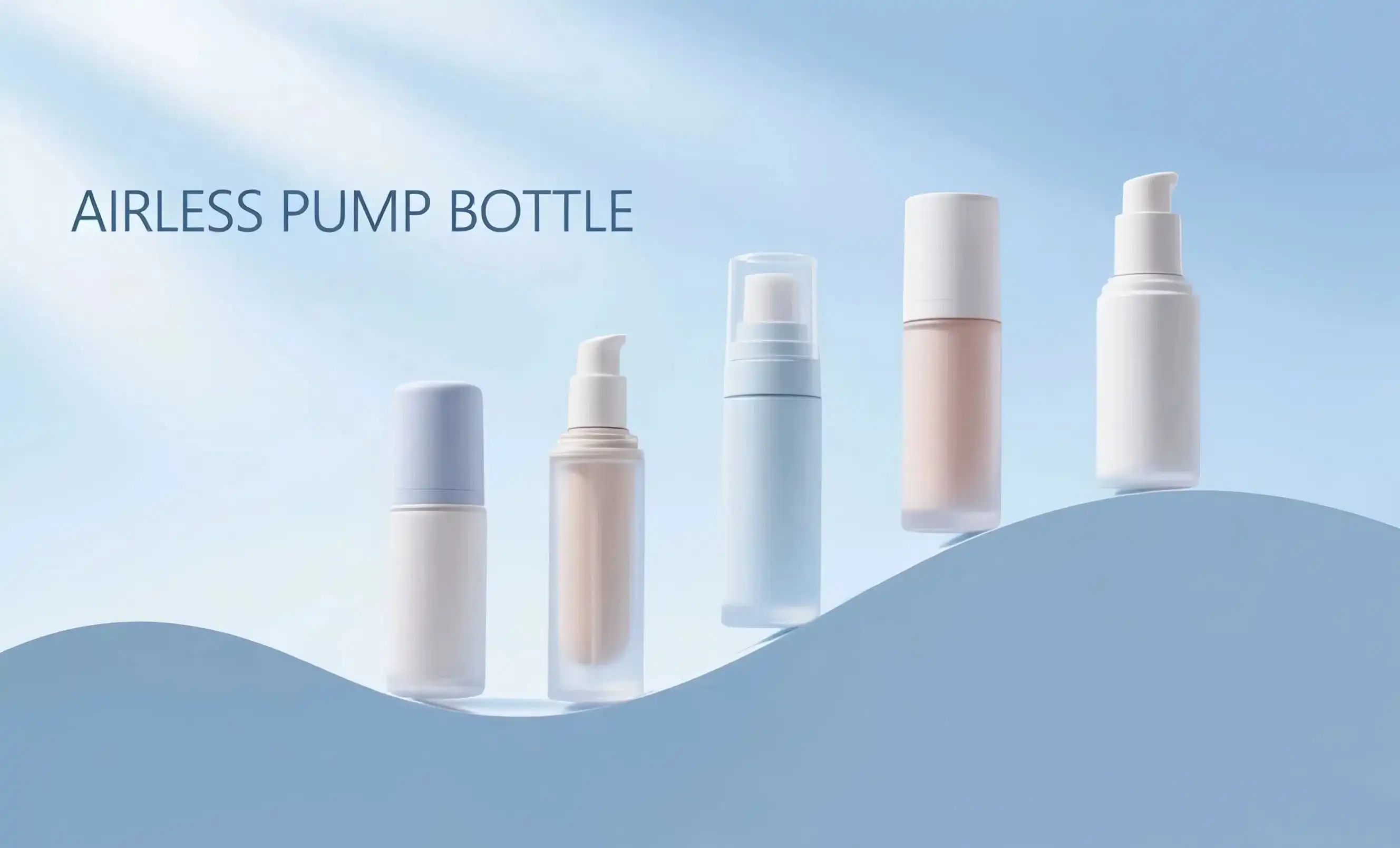Glass vs plastic: Which truly preserves skincare formulations better?
The debate between glass and plastic packaging in the skincare industry is ongoing, with each material offering distinct benefits for product preservation. Glass, with its inert nature, provides an excellent barrier against oxygen and moisture, effectively protecting sensitive formulations from degradation. Its non-porous surface also prevents chemical interactions with the product, ensuring the integrity of active ingredients over time. However, glass is heavier, more fragile, and typically more expensive than plastic alternatives.
On the other hand, plastic packaging, particularly when utilizing advanced technologies like Eco-friendly Airless Bottles, can offer comparable protection with added benefits. These innovative containers minimize air exposure, extending product shelf life and maintaining efficacy. Plastics like PP and PETG are lightweight, shatter-resistant, and often more cost-effective, making them popular choices for both brands and consumers.
The role of UV protection in preserving skincare products
Both glass and plastic can be engineered to provide UV protection, a critical factor in preserving light-sensitive skincare ingredients. While some glass naturally offers UV protection, plastics can be infused with UV-inhibiting additives, achieving similar results. This feature is particularly important for formulations containing vitamin C, retinol, and other photosensitive compounds.
Ultimately, the choice between glass and plastic depends on various factors, including the specific formulation, target market, and brand positioning. High-end brands often prefer glass for its premium feel, while more affordable or travel-friendly options may opt for plastic. The key lies in selecting a packaging solution that not only preserves the product but also aligns with the brand's values and consumer preferences.
The hidden environmental impact of PETG cosmetic containers
PETG has gained popularity in the cosmetics industry due to its clarity, durability, and versatility. However, its environmental impact is often underestimated. Unlike PET, PETG is not easily recyclable through conventional methods, leading to increased waste in landfills. The production of PETG also requires significant energy and resources, contributing to its carbon footprint.
Moreover, the additives used to enhance PETG's properties can make it difficult to process in recycling facilities, further complicating its end-of-life management. As consumers become more environmentally conscious, the hidden costs of PETG packaging are coming under scrutiny, prompting brands to seek more sustainable alternatives.
Innovations in eco-friendly packaging solutions
In response to these environmental concerns, the beauty industry is witnessing a shift towards more sustainable packaging options. Eco-friendly Airless Bottles are emerging as a promising solution, combining product preservation with environmental responsibility. These innovative containers not only extend product shelf life by minimizing air exposure but also often incorporate recycled or biodegradable materials in their construction.
Some brands are exploring bioplastics derived from renewable sources as an alternative to traditional petroleum-based plastics. Others are focusing on refillable systems or packaging made from recycled ocean plastics. These initiatives aim to reduce the environmental impact of cosmetic packaging while maintaining the high standards of product protection and consumer experience expected in the skincare industry.
Why luxury brands still prefer glass despite its higher cost
Despite the availability of more cost-effective plastic alternatives, many luxury skincare brands continue to favor glass packaging. This preference stems from several factors that align with the premium positioning of high-end beauty products. Glass exudes a sense of quality and luxury that resonates with discerning consumers willing to invest in premium skincare.
The weight and cool touch of glass containers contribute to a more luxurious user experience, reinforcing the perception of value. Glass also allows for more intricate designs and decorations, enabling brands to create visually striking packaging that stands out on store shelves and in consumers' bathrooms. Furthermore, glass's recyclability and perceived eco-friendliness appeal to environmentally conscious luxury consumers.
Balancing luxury and sustainability in skincare packaging
As sustainability becomes an increasingly important factor in consumer purchasing decisions, luxury brands are exploring ways to maintain their premium image while reducing their environmental impact. Some are incorporating recycled glass into their packaging, while others are developing refillable systems that allow consumers to reuse the original glass container.
Innovative approaches, such as combining glass with Eco-friendly Airless Bottle technology, are also emerging. These hybrid solutions aim to offer the best of both worlds: the luxury feel of glass with the product preservation benefits and reduced environmental impact of advanced airless systems. By embracing such innovations, luxury brands can maintain their premium positioning while demonstrating a commitment to sustainability.
Material safety alert: Are your plastic bottles leaching chemicals?
The safety of plastic packaging in skincare products has been a topic of concern, with reports of chemical leaching raising alarms among consumers. Different types of plastics can potentially release harmful substances into the products they contain, especially under certain conditions such as exposure to heat or prolonged storage.
For instance, some studies have suggested that certain plastics may leach endocrine disruptors or other potentially harmful chemicals. BPA (Bisphenol A) has been a particular focus of concern, leading many manufacturers to switch to BPA-free alternatives. However, even some BPA-free plastics have been found to have estrogenic activity, highlighting the complexity of the issue.
Advancements in safe plastic packaging for skincare
In response to these concerns, the skincare industry has been actively developing safer plastic packaging options. Advanced materials and manufacturing processes are being employed to minimize the risk of chemical leaching. For example, Eco-friendly Airless Bottles often utilize materials specifically chosen for their low risk of chemical interaction with the product contents.
Rigorous testing protocols have also been implemented to ensure the safety of plastic packaging throughout the product's lifecycle. Many brands now provide detailed information about their packaging materials and safety certifications, addressing consumer concerns about potential chemical exposure from skincare containers.
As the industry continues to evolve, the focus on developing safe, sustainable, and effective packaging solutions remains paramount. Consumers are encouraged to research brand practices and look for products packaged in materials that prioritize both safety and environmental responsibility.
Conclusion
The choice of packaging material for skincare products involves a complex balancing act between product preservation, consumer experience, environmental impact, and safety considerations. While traditional materials like glass and various plastics each offer unique benefits, the industry is increasingly turning to innovative solutions that address multiple concerns simultaneously.
Eco-friendly Airless Bottles represent a significant step forward in this regard, offering enhanced product protection, reduced environmental impact, and improved safety profiles. As consumer awareness and regulatory pressures continue to grow, we can expect to see further advancements in skincare packaging that prioritize both product integrity and sustainability.
Are you a skincare brand owner, product manager, or purchasing decision-maker looking for cutting-edge packaging solutions that align with your brand values and meet stringent quality standards? Topfeelpack offers advanced airless bottles designed to preserve product effectiveness, extend shelf life, and support your sustainability goals. With our commitment to fast customization, competitive pricing, and rapid delivery, we're equipped to meet the dynamic needs of the beauty industry. Whether you're launching a new product line or seeking to improve your existing packaging, our team is ready to provide tailored solutions that elevate your brand and satisfy consumer demands. Don't compromise on quality or sustainability – contact us today at pack@topfeelgroup.com to explore how our innovative packaging can transform your skincare offerings.
References
- Johnson, A. (2022). "Comparative Analysis of Packaging Materials in the Skincare Industry." Journal of Cosmetic Science, 73(4), 201-215.
- Smith, B., et al. (2021). "Environmental Impact Assessment of PETG in Cosmetic Packaging." Sustainability in Packaging, 15(2), 78-92.
- Lee, C., & Wong, D. (2023). "Consumer Perceptions of Luxury Skincare Packaging." International Journal of Consumer Studies, 47(3), 312-326.
- Garcia, M., et al. (2022). "Chemical Migration from Plastic Packaging into Cosmetic Products." Food and Chemical Toxicology, 160, 112781.
- Patel, R. (2023). "Advancements in Eco-friendly Packaging for the Beauty Industry." Packaging Technology and Science, 36(5), 621-635.
- Brown, E. (2021). "The Role of Packaging in Preserving Skincare Formulations: A Review." International Journal of Cosmetic Science, 43(6), 552-567.


 - 副本_1745399213966.webp)

_1747827716538.webp)

